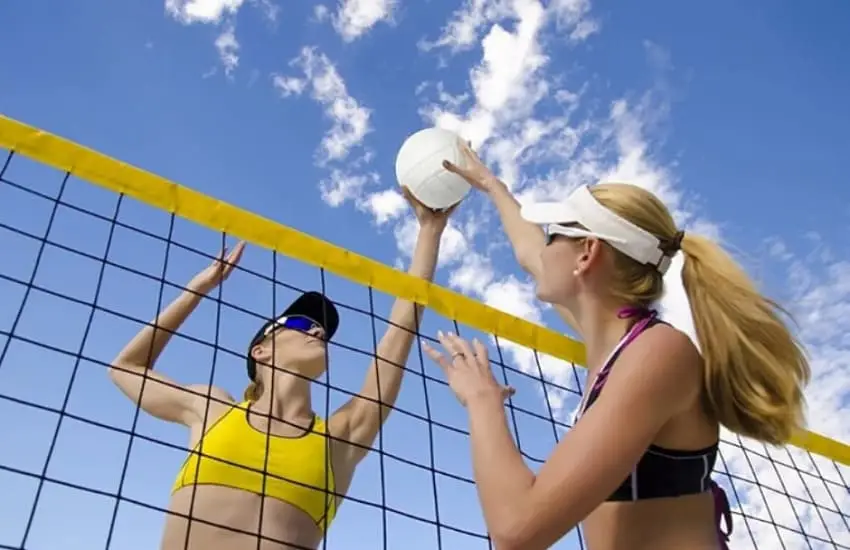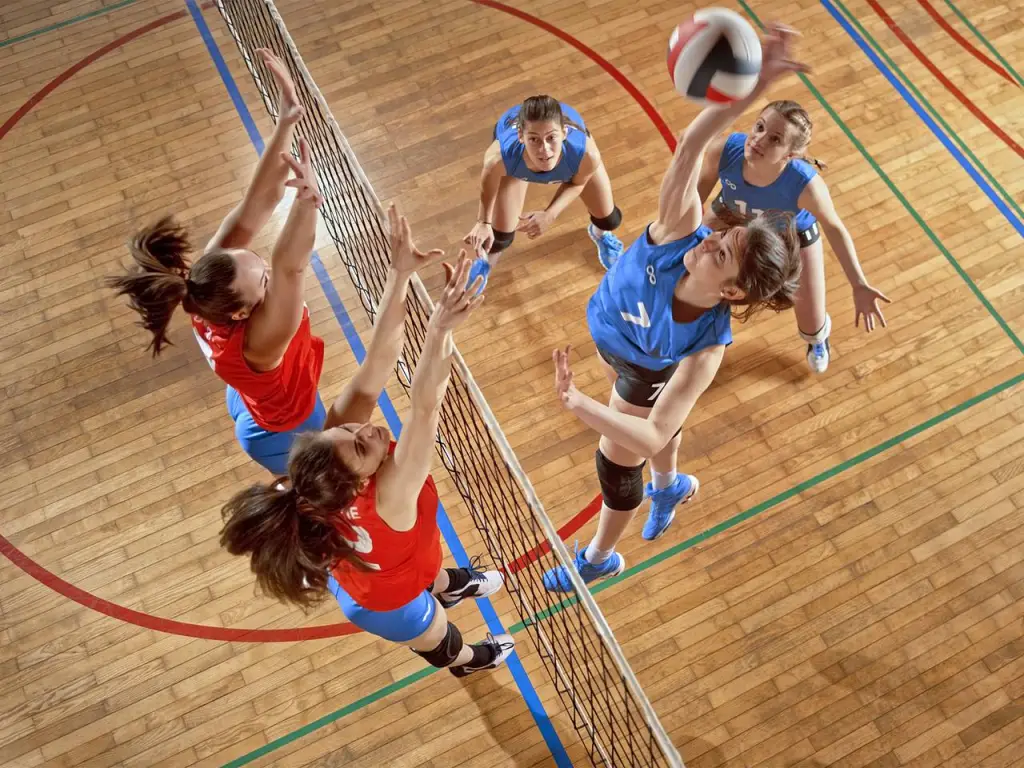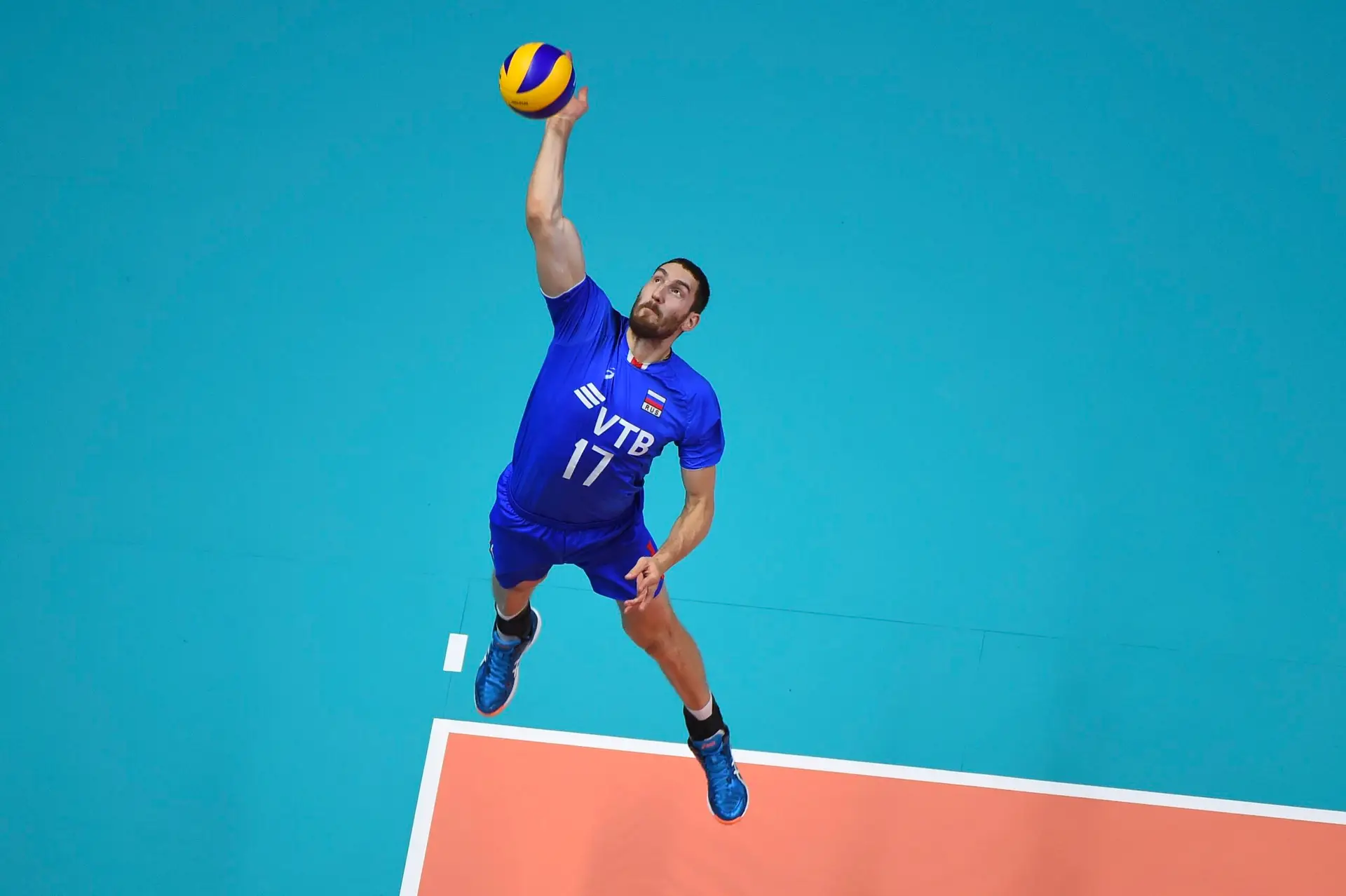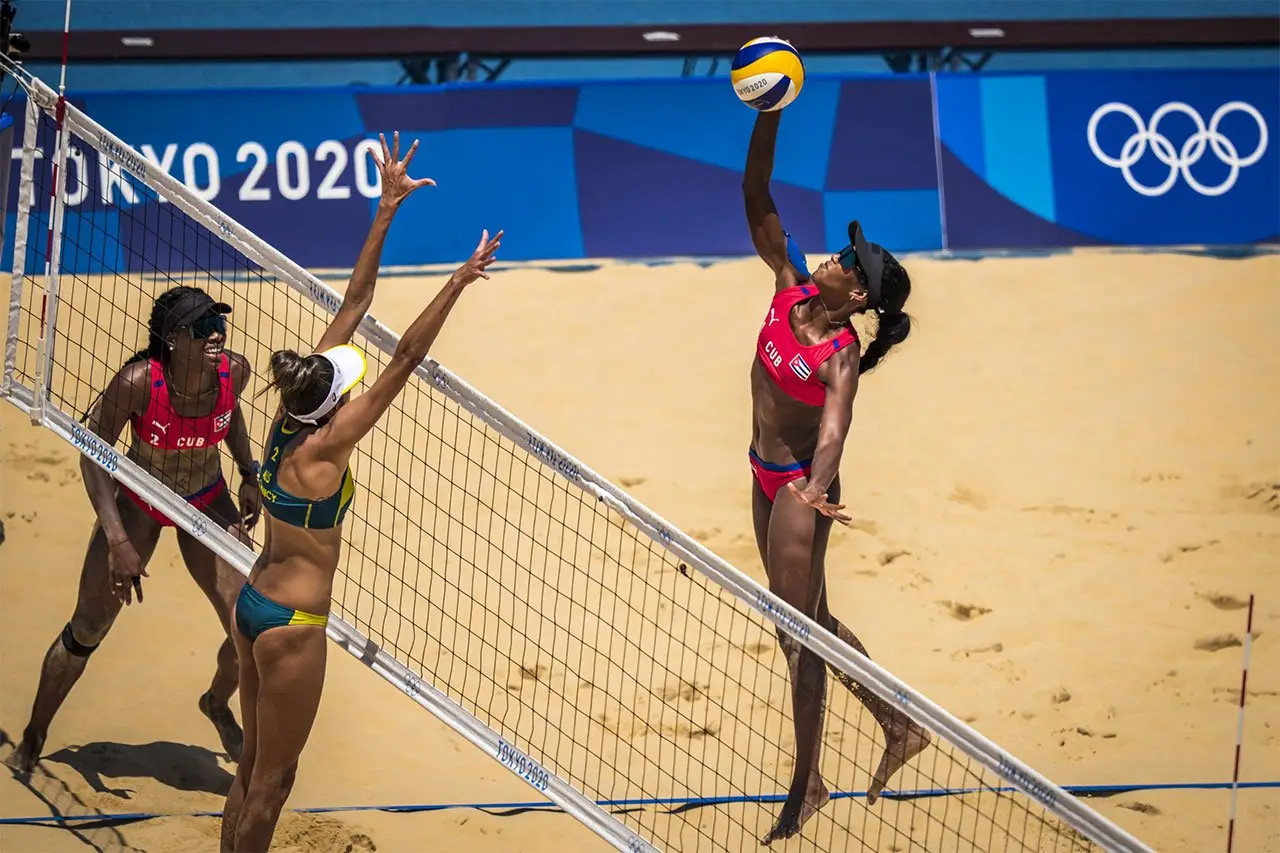Teamwork, the dynamics of short rallies, constant changes in rhythm and vertical activity create an ideal environment for comprehensive development. The influence of volleyball on the body encompasses not only physical condition but also mental processes, forming a stable, flexible and active system that is ready for exertion, coordination and rapid recovery.
Why is it worth playing volleyball?
The format of a volleyball game excludes passivity. Every serve is the beginning of a reaction, every move a series of jumps, adjustments, sprints and jumps. Contact with the ball takes place in a tense position: on half-bent legs, with an active upper body and engaged core. This structure automatically activates the entire musculoskeletal system.
Why play volleyball? A logical question for anyone looking for a form of exercise that combines exertion, commitment and team spirit. The game does not allow for isolated movements; every situation requires the use of the entire body and the ability to make immediate decisions in a limited amount of time.
Endurance and cardiovascular benefits
 Accelerations, sudden changes of direction, vertical jumps and frequent breaks ensure a high pulse rate. The heart learns to work in short bursts with rapid recovery. The effects of volleyball on the body in this context include normalisation of blood pressure, training of the capillaries, acceleration of venous drainage and reduction of cardiac load at rest.
Accelerations, sudden changes of direction, vertical jumps and frequent breaks ensure a high pulse rate. The heart learns to work in short bursts with rapid recovery. The effects of volleyball on the body in this context include normalisation of blood pressure, training of the capillaries, acceleration of venous drainage and reduction of cardiac load at rest.

Fifteen minutes of active play is equivalent to running a distance of 2.5 kilometres. The load is unevenly distributed – the pulse rises sharply and forces the heart to adapt. It is precisely this instability that enhances the training effect without overloading the body.
Effects on the muscles: building strength and tone
The upper limbs are trained through serves, blocks and receptions. The lower part of the body is stressed by jumps, sudden accelerations and weight shifts. The torso stabilises the movement, including the oblique abdominal muscles and the deep stabilisers of the spine. The effects of volleyball on the body ensure complex muscle development without excessive mass.
Abrupt but controlled impulses strengthen tendons and ligaments. Players develop a strength framework that is suitable for any everyday or sporting task. This is precisely why this format is recommended in fitness programmes – the movement develops muscles, endurance and contraction speed at the same time.
Effects of volleyball on the body: improved coordination and reaction
The player constantly changes position: upper body turns, jumps when blocking, rebounds after jumping. Such an environment requires an immediate muscle reaction and precise positioning. Training promotes coordination, increases range of motion and activates fine motor skills. With each play, sensory information processing improves: from spatial orientation to working with peripheral vision. Reaction speed increases, movements become more precise and better timed. This not only improves athletic performance but also safety in everyday life.
Joints, flexibility and safety: the mechanics of mobility
The variety of movements activates several joint complexes at the same time: shoulder, hip, knee and ankle joints. Working with the ball requires stretching, jumps require cushioning, blocks require maximum opening of the shoulders. How volleyball improves health – by involving all joint units in a safe, controllable range.
Unlike strength sports, this sport promotes flexibility without overload. The movements are performed in amplitude, but not under load. Therefore, the risk of micro-injuries remains minimal. The support of a safe technique reduces the risk of injury even during long training sessions.
Effects of volleyball on the body: depth and oxygen saturation
Active movement, frequent changes in intensity, ball control – all of this requires stable ventilation of the lungs. Increasing the depth of inhalation and involving the intercostal muscles builds lung capacity. The effects of volleyball on the body accelerate gas exchange, activate respiratory reflexes and increase blood oxygen saturation.

This effect reduces fatigue, strengthens the immune system and normalises metabolic processes. With regular training, endurance improves and shortness of breath decreases. A trained body adapts more quickly and reacts more easily to external factors.
Weight loss and general fitness: energy consumption and body transformation
A 60-minute game training session activates a consumption of 500 to 700 kcal, depending on the intensity. Through rhythm changes, jumps and constant activity, the body switches to using fat reserves as an energy source. The effects of volleyball on the body with regular training contribute to weight loss and maintaining fitness without strict diets and monotonous cardio training.
The game helps to reduce visceral fat, strengthen the abdominal muscles and boost the metabolism. Muscle density increases, muscles become functional and the body becomes toned. This effect is achieved without overexertion, in a playful way and with psychological enjoyment of the training process.
Impact on agility and adaptability: decision-making speed and body control
Every attack requires switching between positions, changing plans and performing precise actions in a limited space. Rehearsing combinations and reacting to unexpected situations trains agility and enables the body to act quickly and precisely under the most unusual conditions.
The influence of volleyball on the body is reflected in increased adaptability: players learn to react not according to a set pattern, but according to the situation. This skill is crucial at any age – in sport, at work and in everyday life. Agility means protection from injury, quick reactions in dangerous situations and the ability to perform tasks without losing your balance.
Why you should start right now
The format of volleyball makes it possible to integrate training into any lifestyle. A court is easy to find – indoors, outdoors, at school or in the yard. You can start without any prior preparation. The effects of volleyball on the body, with minimal effort, bring maximum results: improved fitness, stabilised well-being, improved mood and energy balance. The modern lifestyle, with its sedentary routine, requires an active balance. The game provides a balanced workout that does not cause overload but leads to lasting results.
Conclusion
 This discipline, which combines vertical jumps, quick changes of direction, precise movements and teamwork, forms a unique sporting profile. The effects of volleyball on the body are evident in the strengthening of the cardiovascular system, increased lung capacity, stabilisation of the joints, development of coordination, weight loss, improved flexibility and enhanced body control.
This discipline, which combines vertical jumps, quick changes of direction, precise movements and teamwork, forms a unique sporting profile. The effects of volleyball on the body are evident in the strengthening of the cardiovascular system, increased lung capacity, stabilisation of the joints, development of coordination, weight loss, improved flexibility and enhanced body control.
 en
en  ru
ru  de
de  ar
ar  es
es  hi
hi  fr
fr  nl
nl  it
it  pt
pt  el
el 



